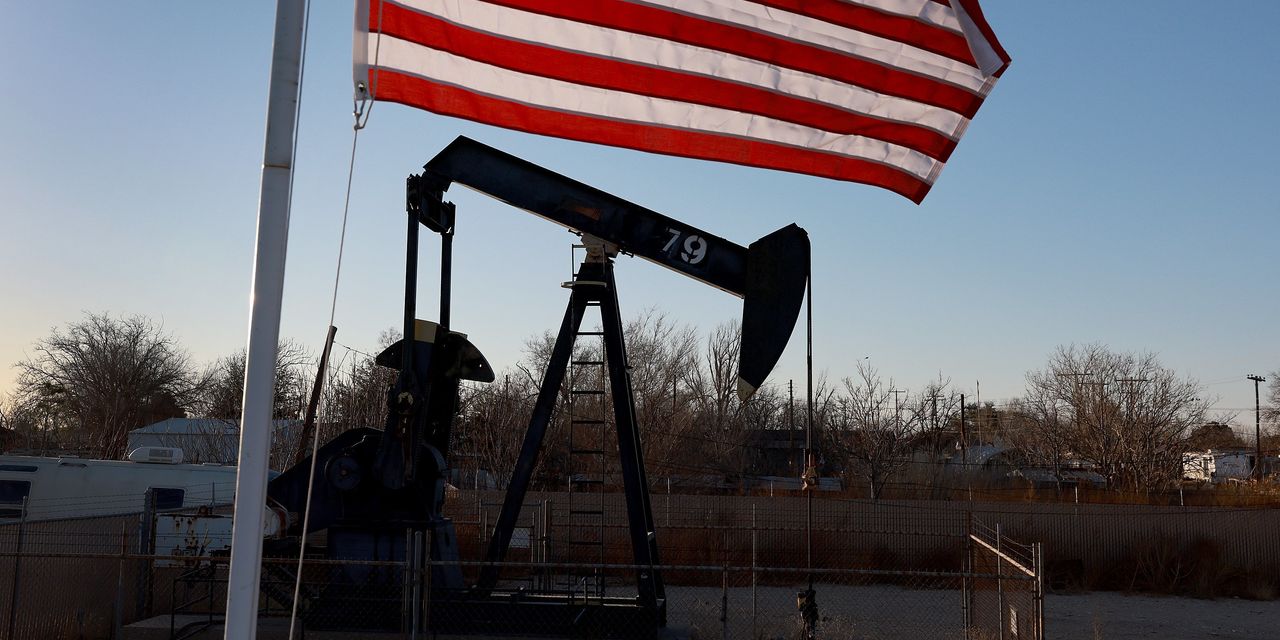Oil futures ended higher Wednesday, with support attributed to upbeat economic comments from a top Chinese official and signs of good physical demand.
Price action
-
West Texas Intermediate crude for August delivery
CL.1,
-1.68% CL00,
-1.68% CLQ23,
-1.68%
rose $1.34, or 1.9%, to close at $72.53 a barrel on the New York Mercantile Exchange. -
August Brent crude
BRN00,
-1.55% BRNQ23,
-1.47% ,
the global benchmark, settled at $77.12 a barrel, up $1.22, or 1.6%, on ICE Futures Europe. -
Back on Nymex, July gasoline
RBN23,
-1.34%
rose 0.6% to end at $2.624 a gallon, while July heating oil
HON23,
-1.55%
rose 3.6% to $2.564 a gallon. -
July natural gas
NGN23,
-0.92%
jumped 4.2% to end at $2.597 per million British thermal units.
Market drivers
Remarks by Chinese Vice Premier He Lifeng helped spark gains, analysts said.
“China’s economic development is showing sound momentum in the first half of the year,” he said, according to Xinhua, China’s official state news agency. Disappointment in China’s rebound following the lifting of COVID curbs earlier this year have weighed on crude prices in 2023.
“Crude oil appeared to catch a bid after China’s Vice Premier said the economy was in good shape, rallying Brent above the 50 day moving average for the first time since April 25,” said Robert Yawger, executive director for energy futures at Mizuho, in a note.
“Crude oil is also bid on strong Asian demand for Middle Eastern crudes,” he said.
Oil had struggled for direction in early trade, but then proceeded to rally as Federal Reserve Chair Jerome Powell testified before Congress.
Powell told a House committee that, with U.S. inflation well above target, more interest rates are likely this year, although he did not shed any new light on the timing of the moves.
The Fed last week left its policy interest rate unchanged, pausing an aggressive cycle of rate hikes that took the fed-funds rate from near zero to its current range of 5% to 5.25% since March 2022. However, Powell last week also indicated the Fed has more work to do to bring down inflation, while forecasts by individual policy makers pointed to the need for two more quarter percentage point rises in the fed-funds rate this year.
Oil remains “fairly rangebound,” with cuts by OPEC+ doing little to push prices higher as worries abut the demand outlook continue to put a cap on the market, said Warren Patterson and Ewa Manthey, commodity strategists at ING, in a Wednesday note.
“In recent weeks there has been increasing concern over China’s demand outlook, despite Chinese oil demand indicators looking fairly good up until now,” they said, noting that China’s National Petroleum Corporation expects domestic oil demand to grow 3.5% year-over-year in 2023, down from a forecast of 5.1% in March.
“China’s demand outlook is crucial for the global market, given that the bulk of global demand growth this year is expected to be driven by China. Significantly weaker Chinese demand would also mean that the global oil balance would not be as tight as currently expected over the second half of 2023,” the strategists wrote.
Read the full article here











